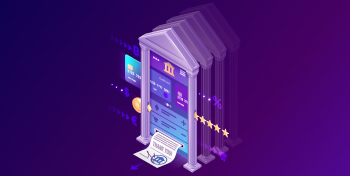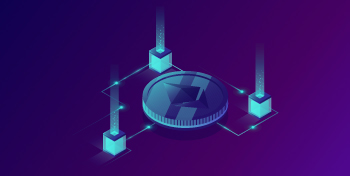We are at an inflection point that will radically change the structure of society, and not necessarily for the better. In addition, the pandemic is far from getting over.
Finally, we are in the midst of an exponential technological wave. Thanks to the fusion of technologies such as artificial intelligence, quantum, nano- and edge computing, blockchain and VR/AR, organizations and industries are experiencing unprecedented changes. Depending on how we humans apply technology, these changes can be both positive and negative for humanity.
For example, the announcement of Meta has already become a catalyst for the metaverse, contributing to the further growth of investments in VR and AR, as well as in blockchain, cryptocurrencies and AI. Although Zuckerberg announced the allocation of $10 billion next year alone for the metaverse, it’s no secret that many are not fans of either Meta or Zuckerberg. Especially because Facebook is deliberately polarizing and destroying societies around the world.
The amount of data that Meta is expected to collect using VR and AR devices will decrease compared to the data they have already collected in past years. Think about eye movement data, emotional data, how your hands look, your room, the products and the people in it. All this is being collected in order to stimulate the advertising business of Meta, and thereby further strengthen its influence and power over world society.
Fortunately, the development of Web 3.0, including NFT, decentralized data storage, computing power and bandwidth, as well as cryptocurrencies, cannot be stopped. In the end, users and content creators will opt for independence from Big Tech, and will receive the benefits of data ownership, empowerment and self-confidence.
In 2022, there will be significant changes in this area, as the technologies of distributed registries – blockchain, are becoming more mature.
2022 is the year of decentralization
Let’s take a look at the five main technological trends of 2022 that will develop next year. Here are five tech trends to watch out for:
The Dawn of the metaverse
The first trend worth following is, of course, the metaverse. There’s no way we’re going to be living in the metaverse next year. It may take another 5-10 years before we can fully immerse ourselves in the figital world (a terrible word, but it briefly describes the convergence of the physical and digital worlds).
The metaverse is as far away from us as the Internet was in 1995, and it will have as big an impact on society as the Internet. It will completely change the way we work, live and communicate, and those organizations that adapt too late will cease to exist. The driving force of the metaverse will be the gaming industry, which is already bigger than the film and music industries combined.
The metaverse isn’t just about fun. There are serious dangers lurking in the immersive Internet. Similar to the negative impact of cybercrime on web 2.0, cybercriminals will embrace the metaverse and discover that, especially at first, it is simply Paradise for them. Representatives of the metaverse, such as generation Z and generation Alpha (children of millennials), may be able to evade these attacks, others will lose their money or, even worse, their identity.
The necessary technologies for the transition from a centralized network to a decentralized one are getting closer to being ready for mass implementation. In addition, AR and VR equipment will become better, lighter and cheaper. In general, next year there will be more decentralized applications, easier to use and with a better user interface, which will mark the dawn of the metaverse.
Artificial intelligence
From huge generative models with pre-training, to synthetic data and tiny machine learning models working at the border using AI-specialized chips, 2022 will witness an explosion of artificial intelligence. The rapid development of deep learning and neural networks under the leadership of companies like DeepMind will lead to new breakthroughs like AlphaFold. In general, in 2022 there will be a “Cambrian explosion” of artificial intelligence, bringing us closer to general-purpose artificial intelligence.
Most of the developments will take place within the framework of experimental research, and only later will they become available for mass implementation. Just as new technologies developed by NASA or Formula 1 eventually become available in our cars, homes and offices. Nevertheless, artificial intelligence and machine learning will play an increasingly important role in automating our work.
For those who are not engaged in coding or do not study data, this will lead to the emergence of more advanced robotic process automation (RPA), which will allow employees and managers doing office work to automate their work even more without knowing the code. Consequently, employees will do more work, since RPA can now automate most monotonous operations.
But, hackers will increasingly turn to AI to do more work, infiltrate organizations faster, and steal more data and money. At the same time, people protecting their companies will also turn to artificial intelligence. Increasingly, both hackers and IT security personnel will use it, which will lead to battles, and to the improvement of tactics on both sides.
The war for talent will intensify under the influence of technology
More and more people began to appreciate the time spent in the family, seeing the benefits of remote work, reducing travel time and the opportunity to focus on passionate projects.
Of course, all this has become possible thanks to the abundance of technologies that facilitate remote work. It has become easier than ever to manage your day, observe your sleep schedule and be more productive than ever before. This awakening, combined with the ongoing pandemic, will lead to more people choosing to follow their passions.
But, the fight for talents will continue, albeit on a much larger scale. Employers have access to more workers anywhere in the world, but they can also choose to replace these jobs with constantly improving artificial intelligence or robotics, depending on the work being done.
They are no longer limited by what is available in their geographical area and may become more selective. Most importantly, remote work technologies will become more advanced and intuitive, if at all, thanks to the dawn of the metaverse, where cooperation through digital highways will become the norm.
Decentralized financing will lead to the destruction of an increasing number of industries
Thanks to the current hype around NFT, decentralized finance (DeFi) will create significantly more opportunities for people to take their financial life into their own hands. Non-interchangeable Tokens (NFT) are a fantastic technology that according to Coinmarketrate.com in addition to allowing you to sell JPEG for millions of dollars, it gives you the opportunity to prove ownership of a digital asset. Regardless of what this digital asset is. As in the real world, as soon as you can prove ownership, the asset becomes a subject of trade and exchange and stimulates economic growth.
NFTs have some unique characteristics that will completely change our economic system, including:
Fractional ownership: Although the utility of NFT is indivisible, ownership of the underlying digital asset is not. A digital asset can be owned by several people, each of whom benefits from a particular underlying digital asset;
Digital asset shortage: As with Bitcoin, digital assets can become scarce. Instead of an unlimited number of digital copies, digital assets can become limited series depending on how many NFTs have been released;
Uniqueness: Non-interchangeability means that you cannot exchange one coin for another, since no NFT is similar to another. They are all unique.
Transparency and authenticity: Thanks to the blockchain, the NFT transfer method is publicly available, and we can see which wallet owns the NFT. If you can prove ownership of the wallet, you confirm ownership of the NFT.
Trading: already now they can be traded between blockchains, thanks to decentralized bridges.
When NFTs become massive, they will change our financial infrastructure. Let’s look at the comparison: in the real world, if you own a piece of land, real estate, art objects or a car, you can rent it out or sell it to someone and become a landlord, art dealer or car rental company. Or you can mortgage your real estate to get more money and buy even more real estate with them to earn even more money.
Then the bank can pack up these mortgages, insure them, or sell them to another bank and make a lot of money. Now replace the real asset with any digital asset associated with NFT, and the bank with smart contracts, and you will get decentralized finance.
This is a very simplified way of explaining it, but it shows what unlimited potential it has. The disintegration that these tokens will bring will completely change the traditional financial industry, since in a decentralized world their suppliers will become unnecessary.
In addition to revolutionizing the world of finance, NFTs will also bring completely new ways of generating income. Starting from playing, reading, streaming, or whatever else you can think of to earn. Decentralized Autonomous Organizations (DAO) will allow any (niche) community to unite and raise funds to borrow or buy any NFT. A great example is the DAO Constitution, which managed to collect $47 million in a few days from cryptocurrency lovers in an attempt to buy a copy of the US constitution. Although they were outpaced, it shows the strength of the DAO.
Yes, it sounds crazy, but it’s better to start getting used to it. In 2022, we will see more applications of decentralized finance, which will allow content creators, cryptocurrency owners and innovators to earn money without the participation of traditional financial institutions.
From distrust to zero trust – a new approach to security
If the last decades have proved something to us, then the current approach to corporate IT no longer works. Hackers, scammers, forgeries, malware, phishing attacks and many other types of digital criminal activity cause great chaos around the world. Given the ever-increasing number of cyberattacks and the global damage from cybercrime, which will grow to $10 trillion in 2025, zero trust will become critical as never before.
The idea of zero trust is that any person or anything trying to access the network is considered untrustworthy by definition and therefore poses a threat to the system. First of all, this is the way of thinking that network administrators and engineers should implement in their architecture to protect the organization from external and internal threats. The term “zero trust” was first proposed by John Kinderwag of Forrester Research in 2010.
The zero-trust architecture requires strict identity verification for everything and everyone who wants to connect. It offers many advantages over traditional architecture, including protection of (consumer) data and a more efficient security stack and protocol.
The zero-trust architecture may seem similar to a system without trust, but in fact they are completely different things. Yes, cryptography plays a key role in both cases. However, the zero-trust architecture is highly centralized to protect everything that requires protection (data, services, system, etc.). In contrast, a trustless system uses cryptography to achieve a single source of truth through a decentralized ledger, the so-called blockchain.
Since the informatization of our society is at an all-time high level and almost all organizations around the world are involved in a certain digital transformation, in 2022 systems with zero trust and systems without trust will become increasingly important.
Add to this the development of quantum computing, which will make today’s encryption useless, and organizations will not have to waste time to change their approach to data.
Fortunately, both a centralized approach with zero trust and a decentralized system without trust can work perfectly alongside each other. Both systems are necessary in the face of ever-growing cyber threats, and 2022 will witness a significant increase in the implementation of these systems.
Conclusion
In the coming year, we can expect even more radical changes, and by the end of 2022, humanity will be closer to digital media. Organizations can no longer postpone their digital transformation projects, and everyone should make every effort to stay up to date with the latest technologies.
Moreover, the changes are accelerating. If organizations want to stay relevant, they need to be vigilant and focused. They should develop an adaptive and flexible culture in which people can explore and experiment with new technologies and share their knowledge within the organization. This is the only way organizations will be able to remain relevant in an ever-increasing pace of change. Already, the life expectancy of large organizations has significantly decreased over the past decades. New “unicorns” appear and disappear faster and faster, which will only increase in the coming years.


